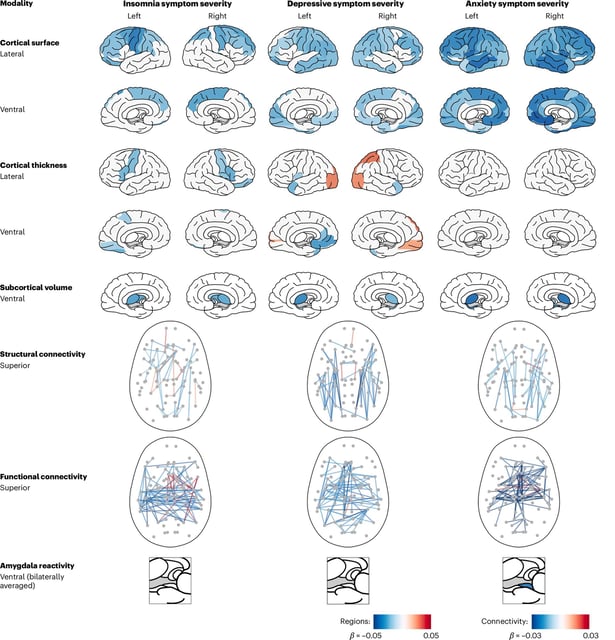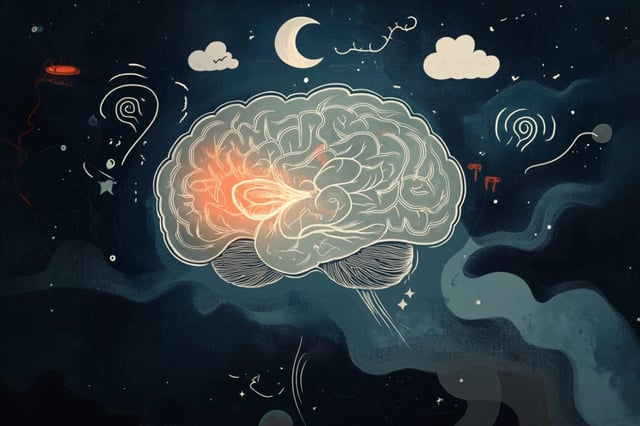Overview
- Researchers from Vrije Universiteit Amsterdam analyzed brain scans of more than 40,000 UK Biobank participants, marking the largest study of its kind.
- Findings show shared neural changes across insomnia, depression, and anxiety, including reduced cortical surface area, smaller thalamic volume, and weaker brain connectivity.
- Disorder-specific patterns were also identified, with insomnia linked to smaller reward-related brain areas, depression to a thinner cortex in emotion and language regions, and anxiety to weaker amygdala reactivity and connectivity.
- All implicated brain regions converge on a shared amygdala–hippocampus–medial prefrontal cortex circuit, highlighting a common vulnerability framework.
- The study provides a foundation for future research and may guide the development of more effective, targeted treatments for these frequently overlapping disorders.

